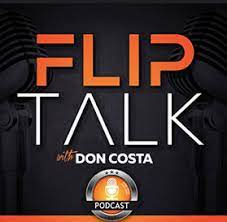By Randy Hughes
After using Land Trusts to hold title to my real estate, contracts and notes for the last 40 years, I have discovered that 99% of the population does not understand the nature of a Land Trust nor the many benefits that can be derived. I consider this good news.
Because of their low profile, Land Trusts are very useful for (off the radar) real estate transactions. The following ideas are merely suggestions that you might consider. Be careful to think through all the ramifications before engaging in these concepts.
If you want to borrow money conventionally and you will use a deed to real estate as collateral for the loan, you will have to give the lender the full deed. In other words, you cannot divide a deed up into pieces no matter how much you are borrowing. For example, if you owned a parcel of real estate in your own personal name (your name is on the deed), with $100,000 of equity and you wanted to borrow only $20,000, you would have to collateralize that deed in full. In other words, you would have to give $100,000 of equity to secure only a $10,000 loan.
The Land Trust can be used to solve the problem of over-collateralizing a loan. The beneficial interest of a Land Trust can be divided into unlimited shares. Therefore, a Land Trust holding a piece of real estate with $100,000 of equity could use some of its shares (but not all of its shares as is required by a personally held deed) as collateral for a $10,000 loan. With a share value of $1,000 there would be 100 shares.
The beneficiary of the Land Trust could “temporarily assign” 10 shares for a $10,000 loan. This would leave 90 shares unencumbered that could be used for future financing. The flexibility of using a Land Trust far exceeds the standard method of title holding.
In another scenario, assume that two real estate investors have owned their properties (of similar current market value) inside Land Trusts for 30 years. Both investors are “out” of depreciation. Neither investor wants to conventionally sell their properties and incur huge capital gains.
Once again, the Land Trust trots in for the rescue. Each investor (beneficiary of the land trust) sells the beneficial interest to the other on an installment sales agreement. The terms are nothing down, interest only (no capital gain to report) and a ten-year balloon (enough time to figure out what to do next).
What this transaction accomplishes is a new amortization schedule for each investor (new basis). The deal is private and flies under the assessor’s radar (no reassessment upon the “sale”) and no transfer tax is triggered. If the parties involved so desire they can hold options to buy the beneficial interests back after (or during) the ten years has lapsed.
If you don’t think this will work, look up and read the tax court decisions on; Weaver, 71 TC No. 42. 1978; Rushing CA-5, 441 F.2d 593, 1971 and Pityo, 70 TC No. 21 1978.
The key to taking advantage of these creative ideas is finding someone who will “play.” Of course, my mind wonders to people who have studied my Land Trusts Made Simple® home study course or taken one of my live seminars. It is those who understand how the “game is played” that benefit you the most. I encourage you to seek out other “players” like yourself…it will benefit you greatly.
There are many other similar structures that I discuss in detail in my Land Trusts Made Simple® home study courses. Please go to: www.landtrustsmadesimple.com for more information. Or, if you would like to attend one of my FREE Land Trust Webinars, go to: www.landtrustwebinar.com/411 Also, feel free to call me with any questions. I actually answer my phone! 1-866-696-7347






















